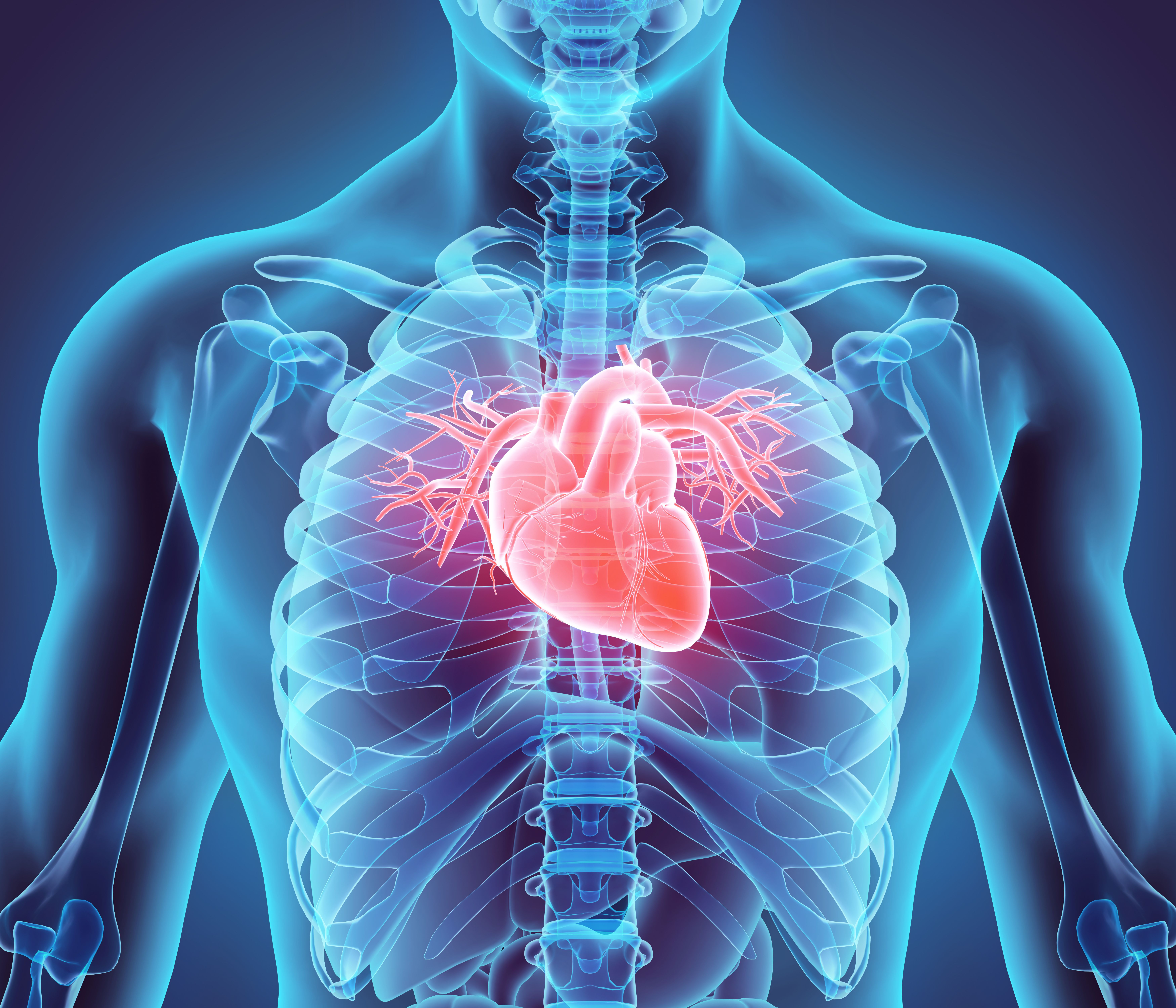Publication
Article
Medical Economics Journal
Managing atrial fibrillation
Author(s):
Manage patients with atrial fibrillation to boost payments under MIPS.
©Lightspring

As many as six million people in the United States have atrial fibrillation (Afib), a quivering or irregular heartbeat, and this number continues to increase with an aging population, according to the Centers for Disease Control and Prevention (CDC).
There’s another driver of Afib patients: Health and fitness wearables, most notably the newest Apple Watch Series 4 set to include an FDA-approved built-in EKG sensor.
“There’s a tsunami of Afib patients coming,” says Jim Collins, CPC, physician educator and chart auditor with Cardiologycoder.com Inc. in Saratoga Springs, N.Y. “We’ll be more aware of patients with Afib who are completely asymptomatic. These are individuals who would have never sought medical therapy if it weren’t for their smart watch telling them to contact their physician.”
James Allred, MD, a cardiologist and CEO of CV Remote Solutions, a remote monitoring consulting company in Greensboro, N.C., agrees. “I think we’ll see an explosion in the detection of patients with atrial fibrillation over the next few years, and there’s a huge opportunity for internal medicine,” he says.
Rising numbers of Afib present primary care physicians, many of whom make the initial diagnosis, with opportunities to prescribe heart rate-controlling and/or anti-coagulant medication as quickly as possible to prevent costly ED visits and hospitalizations. Doing so not only improves outcomes, but can also boost payments under the Medicare Access and CHIP Reauthorization Act of 2015 (MACRA), the federal law that seeks to reform Medicare payments while improving outcomes and reducing costs.
Beginning in 2019, physicians in the Merit-based Incentive Payment System (MIPS), one of two participation tracks under MACRA, will be penalized if their costs exceed anticipated amounts or rewarded for keeping costs under the projected amounts.
By prescribing warfarin or another FDA-approved anti-coagulant medication for certain patients with non-valvular Afib or atrial flutter, physicians choosing to report on related MIPS measures may boost their quality scores and receive a financial bonus.
With MIPS, reducing costs is critical, says Collins. Medical costs for individuals with Afib are more than $8,000 higher per year than for individuals without it. Afib causes more than 750,000 hospitalizations each year and costs the United States approximately $6 billion annually, according to the CDC.
“Everybody will hit that button saying they prescribed warfarin or another anti-coagulant. That’s basic medicine,” says Collins. However, he adds, to win under MIPS, physicians also need to reduce costs, meaning they must ensure that their patients cost less to treat, on average, when compared with other providers in their specialty
Assess risk for a thromboembolic event
Physicians gain points under MIPS when they use the CHA2 DS2-VASc assessment to determine risk for patients with non-valvular Afib or atrial flutter. This assessment addresses certain risk factors, including congestive heart failure, hypertension, age (65 or older), diabetes mellitus, stroke/transient ischemic attack/thromboembolism, vascular disease (prior myocardial infarction, peripheral artery disease, or aortic plaque), and sex (female). Patients with a risk score greater than one are included in the MIPS measure.
Prescribe medications, monitor INRs
Novel anti-coagulants should be the first line of defense for patients with non-valvular Afib who have normal kidney function, says Allred. “Warfarin has a higher risk for intracranial bleeding, and there are more drug interactions and food interactions with warfarin than the newer drugs,” he says. “You also need to monitor warfarin frequently.”
However, one challenge is that newer anti-coagulants are expensive, says Nitin Damle, MD, an internist at South County Internal Medicine in Wakefield, R.I. and past president of the American College of Physicians. He frequently refers patients to drug manufacturer coupons and rebate programs.
“If the drug companies would price these medications appropriately to begin with, we wouldn’t need to jump through all of these hoops to help patients get discounts,” he adds.
Warfarin costs as little as $4 while Xarelto, a newer anticoagulant, is at least $424.69, according to GoodRx.com.
Even though warfarin requires frequent INR monitoring, Melissa Lucarelli, MD, FAAFP, a primary care physician in Randolph, Wisc., uses a fingerstick INR machine so she can check patients’ levels at the point of care and receive immediate results.
“We have standing orders saying that if patients are between two and three, they stay on their same dose for four weeks,” Lucarelli says. “If they’re outside of that range, then someone contacts me while the patient is still in the office so I can address the dosing.”
Some of Lucarelli’s patients-particularly those that are immobile-also use a home INR monitoring machine. She’s able to bill for setting up this service using CPT code 93792 (patient/caregiver training for initiation of home INR monitoring) that pays $55.08 on average. She reports anticoagulation management every four weeks using CPT code 93793 that pays approximately $12.24 on average.
Coordinate care with cardiologists
For patients with symptomatic Afib, best practice is to involve a cardiologist as soon as possible, says Allred. “Our ability to achieve and maintain normal rhythm decreases the longer the patient is in a-fib,” he adds.
Damle consults with cardiologists frequently to identify the optimal course of treatment-chemical or electrical cardioversion versus ablation therapy. Cardiologists also help him determine whether warfarin, coumadin, or a new anticoagulant is the best option given the patient’s other comorbidities.
“We want to try and discourage internists from practicing in a silo and taking care of these Afib patients on their own,” says Allred. “By partnering with a cardiologist, they’ll also see a bigger savings because patients will be in normal heart rhythm, feeling well, and not in the ED or hospital.”
Create an Afib clinic
Another way to reduce costs is to create an Afib clinic in which patients have immediate access to a dedicated provider. This is often a nurse practitioner or physician assistant who can advise patients when they start to experience symptoms of the condition, says Allred, who runs a dedicated clinic in his own cardiology practice and provides consulting services around creating similar care models.
Allred’s clinic, which is staffed by a nurse practitioner who sees 15-30 patients daily, resulted in an 8% reduction in ED visits over the course of one year.
“I’ve seen a dramatic decrease in ED visits and hospitalizations when patients are managed in an Afib clinic,” says Allred.
“These clinics are a fairly new concept, but they can really help you win the MIPS game,” says Collins. Here’s how: Even though frequent outpatient visits and labs may add several hundred dollars on the ambulatory side, they reduce costs on the inpatient side-costs that often exceed $10,000 for a single Afib-related hospital admission or $100,000 or more for a stroke-related admission, he adds.
Afib clinics also make it easier to focus more aggressively on lifestyle modification that can reduce the impact of the condition, such as weight management, sleep apnea management, and tobacco and alcohol cessation counseling, says Allred.
Having a dedicated Afib clinic may also make it easier to bill for services such as transitional care management and chronic care management, says Collins.
Consider remote monitoring
Remote monitoring cardiac devices (e.g., pacemakers, defibrillators, and implantable loop recorders) can also reduce costs, improve outcomes, and generate additional revenue, says Collins. In particular, physicians can report CPT code 99091, which denotes the collection and interpretation of physiologic data (e.g., ECG, blood pressure, glucose monitoring) digitally stored and/or transmitted by the patient and/or caregiver to the physician or other qualified healthcare professional requiring a minimum of 30 minutes. This code pays an average of $58.68.
Provide patient education
Setting patient expectations about Afib management is an important part of cost savings. “Afib is a lifelong disease state, but it’s not life threatening unless you have a stroke,” says Allred. “We need to give patients a plan for the next time they have Afib-as-needed medicines and what to do when symptoms arise. It’s about helping patients learn to live with their disease.”
Focus on adherence
Medication adherence can also reduce costs, says Damle. South County Internal Medicine is part of an accountable care organization that has hired a part-time (two days per week) pharmacist who checks in with patients every few months. “They report back to us so we can make sure the patient is on the right medication and dosage and is taking that medication appropriately,” Damle explains. “This prevents additional ED visits and hospitalizations.”
Documentation tips for Afib
Jim Collins, CPC, physician educator and chart auditor with Cardiologycoder.com Inc. in Saratoga Springs, N.Y., says physicians can ensure accurate payment for treating patients with Afib by including the following five elements in their documentation:
Current medications
This list must include warfarin or another FDA-approved anticoagulant drug.
Afib vs. atrial flutter
To ensure specificity, document the following:
- Type of Afib (i.e., paroxysmal, persistent, chronic, or unspecified)
- Type of atrial flutter (i.e., typical, atypical, or unspecified)
Risk of a thromboembolic event
Patients with low risk of a thromboembolic event (i.e., those with a CHA2 DS2-VASc risk score of 0 or 1) are excluded from the MIPS measure. Physicians must document either the numeric score or all of the individual risk factors assessed to support an assessment of the CHA2 DS2-VASc score.
Comorbidities
Obesity, sleep apnea, and hypertension frequently contribute to Afib and atrial flutter and may generate higher payments in some risk-adjusted payment models.
Other MIPS exclusions
Document any of the following, when applicable:
- Comfort care (i.e., those receiving hospice, palliative, and supportive treatment for a terminal illness or who have refused life-sustaining treatment)
- Transient or reversible cause of Afib (e.g., pneumonia, hyperthyroidism, pregnancy, or cardiac surgery)
- Medical reason for not prescribing warfarin or another FDA-approved anticoagulant (e.g., atrial appendage device in place)
- Patient reason for not prescribing warfarin or another FDA-approved anticoagulant
- System reason for not prescribing warfarin or another FDA-approved anticoagulant (e.g., patient is currently enrolled in a clinical trial for treatment of Afib or atrial flutter)






